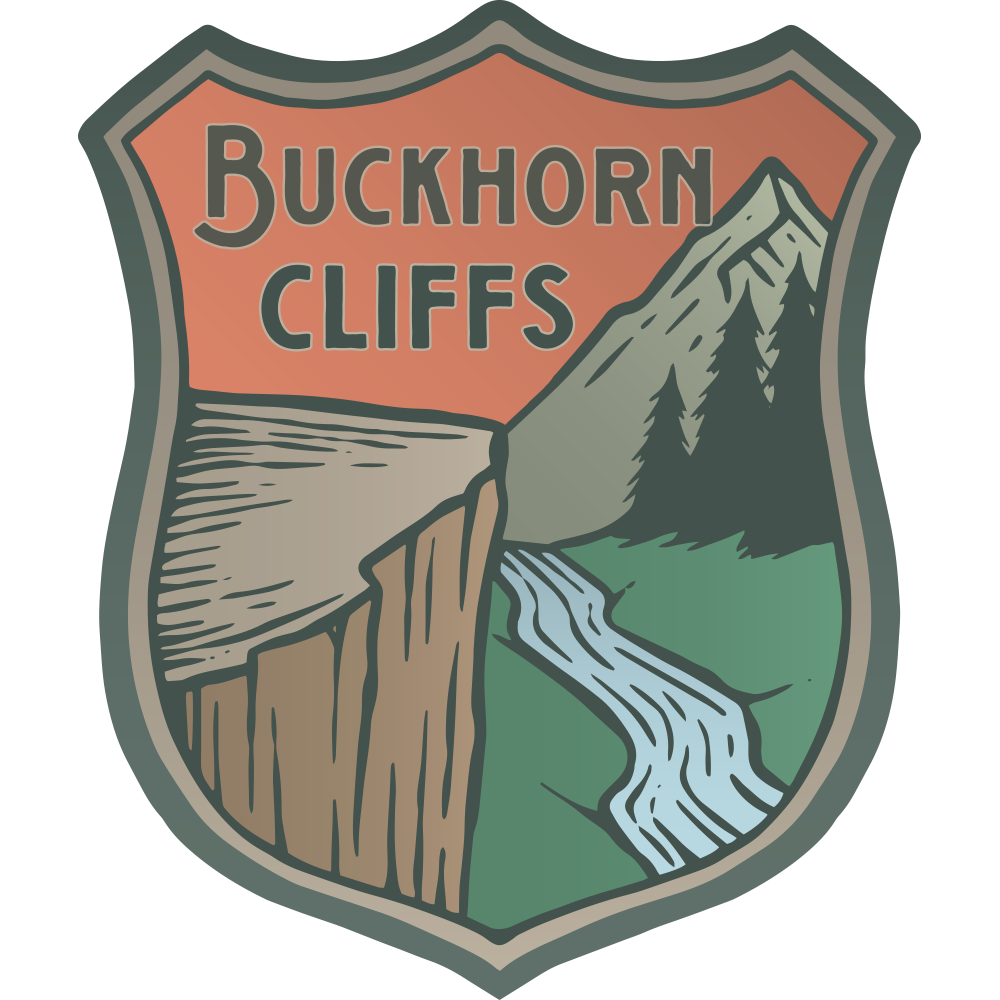The 2024 FEMA National Household Survey reveals a complex but encouraging picture of how Americans are preparing for disasters. With over 7,500 participants from every state and U.S. territory, the data offers insight into what people are doing right, where they are falling short, and what needs to change.

Preparedness Is on the Rise
- 83 percent of Americans reported taking at least three preparedness actions, a large jump from 57 percent in 2023.
- Only 32 percent feel confident in both their ability to prepare and that it would make a significant difference.
- Cost was the top barrier to taking action, reported by 26 percent of respondents.
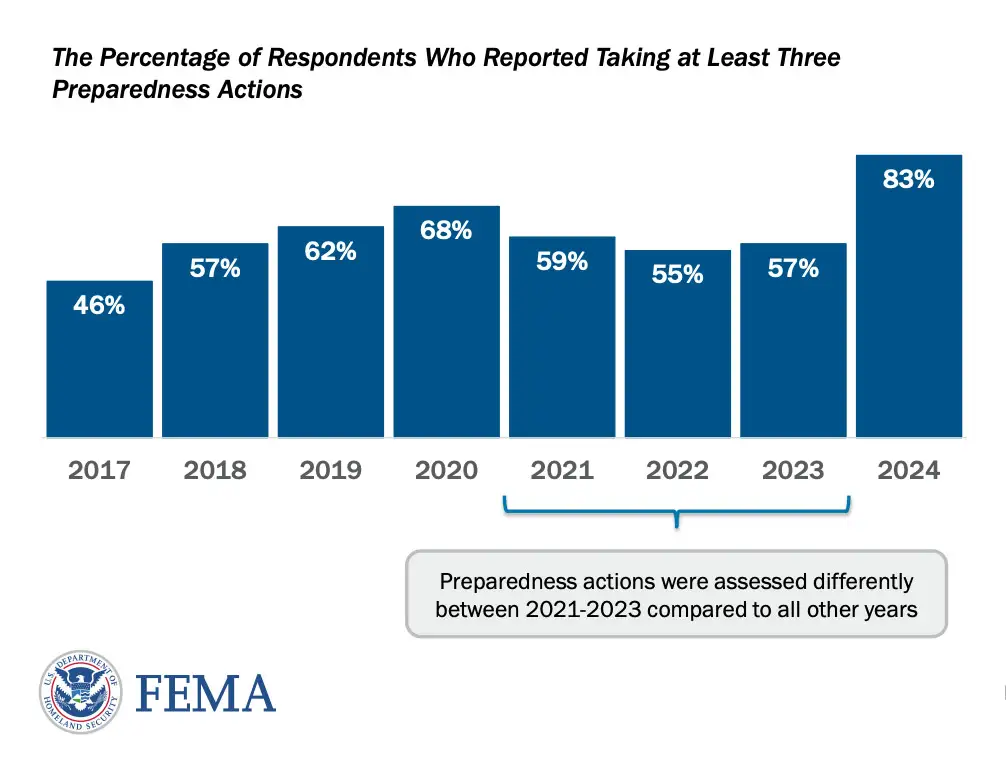
Why People Prepare
- 44 percent said the primary reason for preparing was to keep themselves and their family safe.
- 30 percent said they worried about a disaster in the past year, but many still hadn’t taken action.
- Health and financial stress topped the list of general concerns, followed by fear of being affected by a disaster.
What People Worry About Losing Access To
- 67 percent were very concerned about losing access to water.
- 66 percent said electricity.
- 65 percent said basic needs like food, shelter, and medical support.
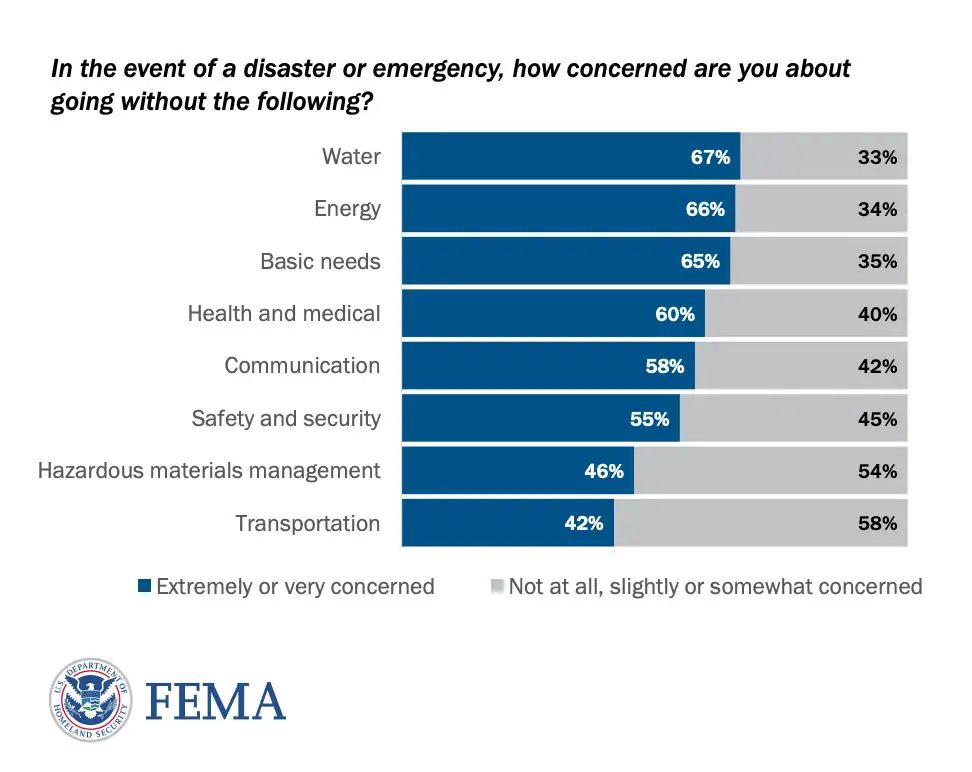
Who Do People Expect to Help?
- 71 percent expect help from family or friends.
- 52 percent expect support from the federal government.
- The top needs people anticipate after a disaster include food, water, temporary shelter, and first aid.
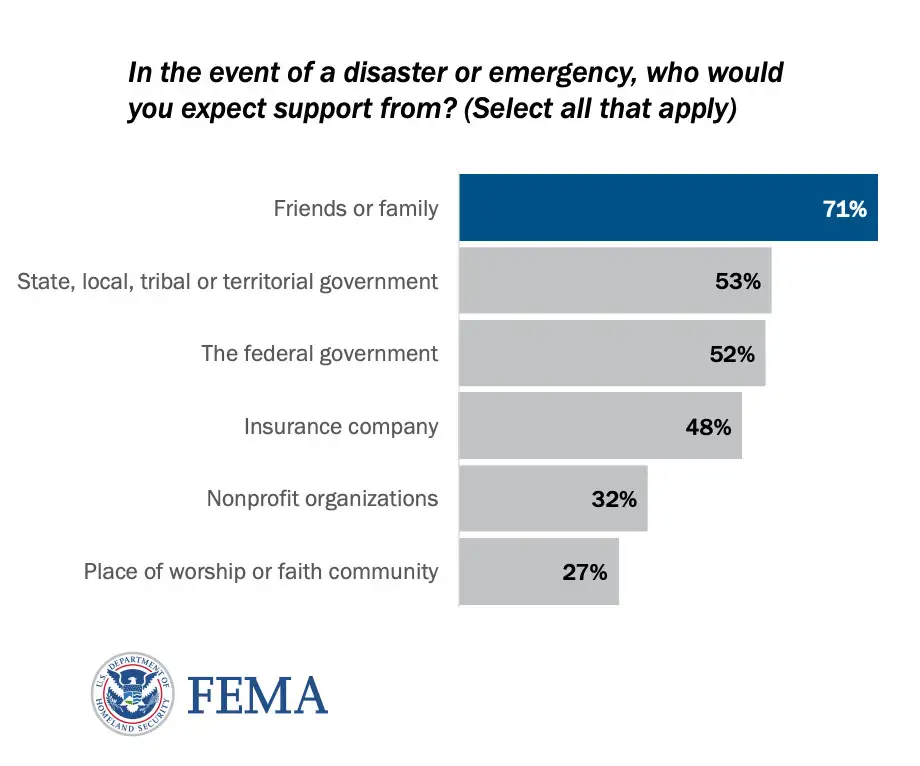
Preparedness by Demographics Race and Ethnicity
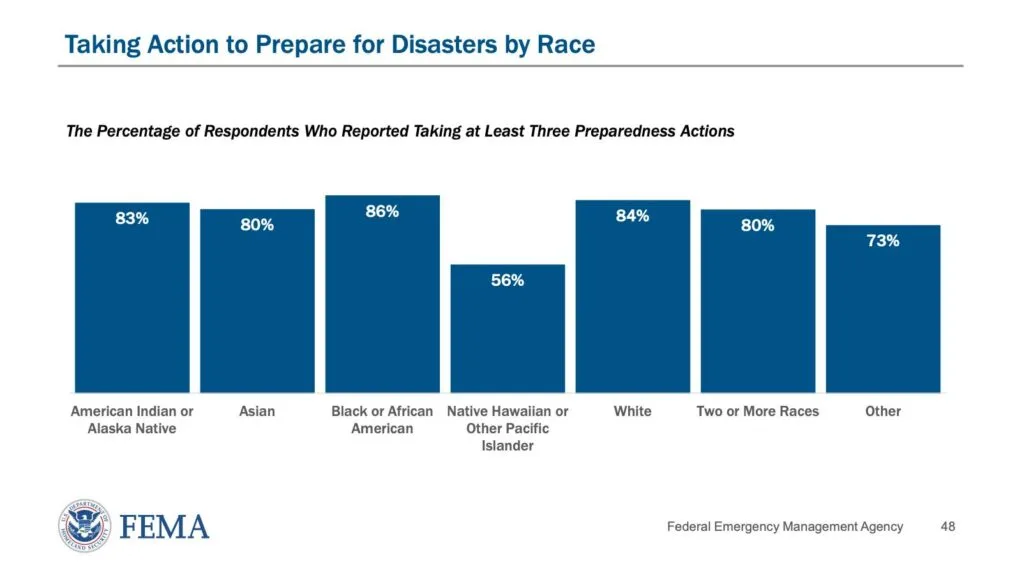
| Group | Took 3+ Actions | Prepared Over 1 Year |
|---|---|---|
| White | 84 percent | 30 percent |
| Black or African American | 86 percent | 24 percent |
| Hispanic or Latino | 73 percent | 23 percent |
| Asian | 80 percent | 21 percent |
| American Indian or Alaska Native | 83 percent | 30 percent |
| Native Hawaiian or Pacific Islander | 56 percent | 26 percent |
Age Groups
- Those 60 and older are more likely to have been prepared for more than a year (42 percent).
- Younger adults are more likely to say they intend to prepare in the future but haven’t taken steps yet.
Income Level
- Only 35 percent of lower-income individuals had money saved for emergencies.
- Just 39 percent had any form of property insurance compared to 82 percent among higher-income groups.
Homeownership
- Homeowners are far more prepared than renters.
- 87 percent of homeowners had insurance versus 43 percent of renters.
- 73 percent of homeowners had emergency supplies compared to 60 percent of renters.
Where People Get Their Preparedness Info
- 78 percent had seen or heard preparedness info in the past year.
- Top sources were the internet (45 percent), social media (36 percent), and TV (35 percent).
- Very few people received information on how to help neighbors or get involved in their community.
Preparedness Confidence Is Low
- Just 32 percent feel very confident that their preparedness actions would help them survive a disaster.
- Those with past disaster experience or who had access to information were more likely to feel capable.
Top Barriers to Being Ready
- 26 percent said it costs too much.
- 25 percent said they didn’t know what to do.
- 23 percent said they hadn’t had time.
What It Means
Preparedness is improving, but there are still gaps. Confidence is low, and affordability continues to be a major obstacle. Vulnerable populations like renters, low-income households, and some racial groups lag behind in key areas like insurance coverage and emergency savings.
This survey shows the need for better outreach, community-based education, and practical, low-cost ways for everyone to get ready.
Take the Next Step: Build Your Own Self Managed Insurance Plan
Reading the stats is one thing. Acting on them is what makes the difference. If you’re unsure where to start, I’ve created a foundational guide to walk you through the process of becoming more self-sufficient, step by step.
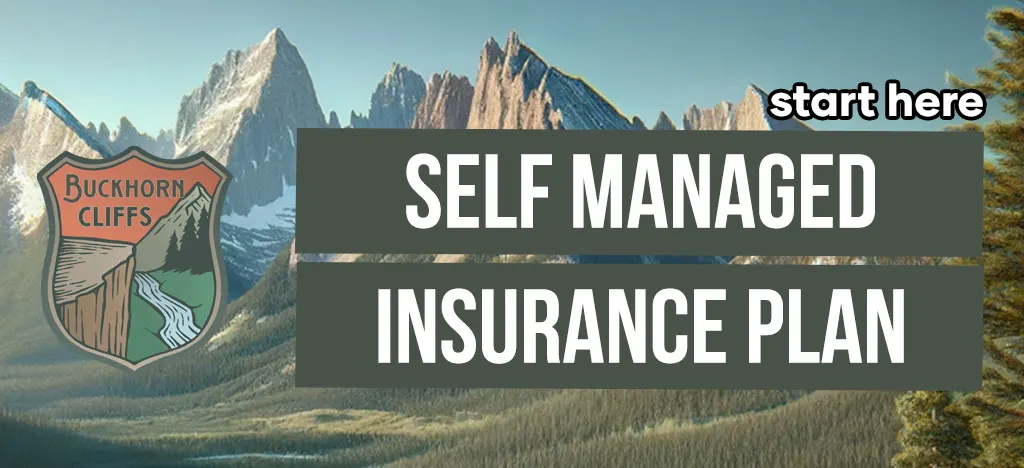
This is your reference guide to creating a SELF MANAGED INSURANCE PLAN. It’s a proactive survival strategy that helps you prepare before disaster strikes. This page covers the skills, supplies, and systems needed to manage risk, protect your family, and stay independent when outside help is unavailable.
Learn more and start building your plan today.
